#all of this taken from Getty Images
Explore tagged Tumblr posts
Text
















All the iconic portrait set of Jarvis Cocker by Kevin Cummings (I think this is almost all the photos that I have searched in Getty Images.)
#jarvis cocker#kevin cummings#britpop#90s#pulp#all of this taken from Getty Images#except before the last photo taken from Acrylic Afternoon#his eyes...spectacular
40 notes
·
View notes
Text
The 4B Movement: How South Korean women are leaving the patriarchy behind
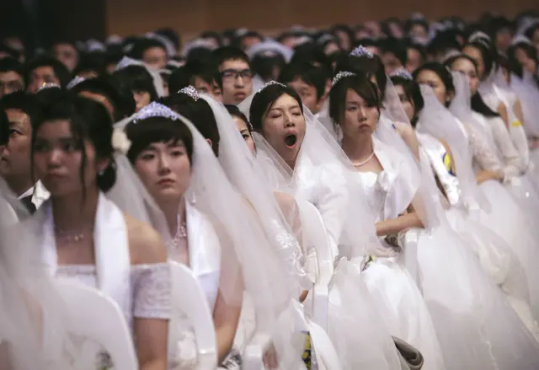
(Getty Images)
In 2016, a 34-year-old man named Kim Sung-min waited inside a unisex restroom outside exit 10 of Gangnam Station, Seoul South Korea. Six different men came and exited through the restroom over the span of an hour, until a 23-year-old woman entered, and Kim proceeded to stab and kill her with a 12-inch-long sushi knife. In court, Kim stated, “I did it because women have always ignored me.” Kim’s actions and thoughts are not out of the ordinary amongst Korean men—violence against women is extremely common in South Korea.

(BBC)
South Korea has a long record of female subjugation. Between 1953 and 2021, abortion was illegal in almost all circumstances, and current law allows a woman to get an abortion only if she has consent from a male relative or her boyfriend/husband/partner. A 2015 South Korean government survey revealed that almost 80% of women had been sexually harassed at work. A survey released by The Ministry of Gender Equality and Family found that 57.8 percent of women felt vulnerable to misogynistic violence. Digital crime and sexual harassment are extremely common— “molka”, up-skirt photos, and secret cameras hidden in restrooms are rampant, so much so that any cellphone purchased in South Korea has a mandatory chime when photos are taken. The World Economic Forum’s 2022 Global Gender Gap Index ranks South Korea at number 99 out of 146 countries for gender equality. Legislation actively works against women trying to report sexual assault. Men accused of stalking or harassment can “ask” their victims to drop charges, and in 2022 a man murdered his former colleague after she refused to drop charges against him for stalking her since 2019. South Korea has the highest gender pay gap of all the OECD countries—the top wealthiest 37 countries, globally, with women earning on average a third less than men. These alarming statistics have come years after the “Gangnam Station” murder, and South Korean women continue to be targeted for their gender.
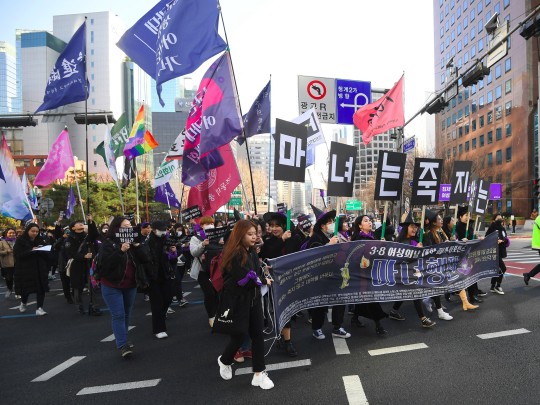
(Jung Yeon-Je/AFP via Getty Images)
Despite Kim’s own testimony, government authorities explicitly denied the misogynistic motive, and the prosecution announced that the case was not being investigated as a hate crime. Kim was eventually sentenced to 30 years in prison. In response to the murder, women took to the streets outside Gangnam station and the surrounding areas in protest. The women, many of whom had never considered themselves feminists or activists, but the nature of the crime and the misogynistic motivation, as well as the court's refusal to acknowledge it, outranged them. The murder incited intense debates about misogyny within the country, and the gender inequities women faced both socially and economically. Five months after the murder, Cho Nam-Joo’s novel Kim Jiyoung, Born 1982 was published. The book devastatingly details an everyday woman’s daily experiences of nonstop sexism, inequality, and misogyny in contemporary South Korea, and served as another enraging eye-opener that would develop into what would become known as the 4B Movement.
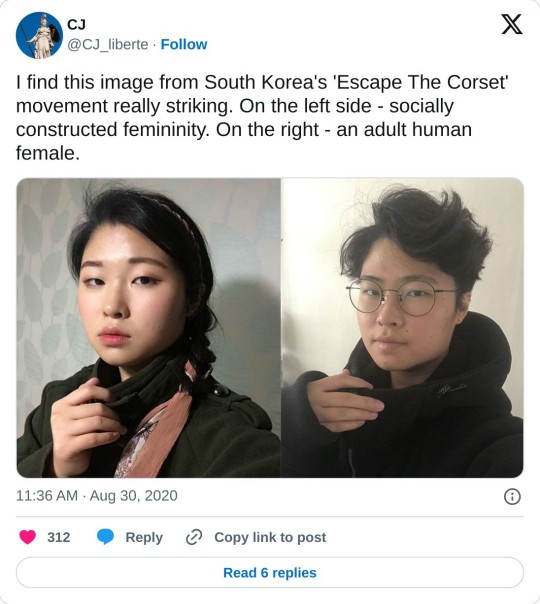
The four B’s (or “Four No’s”) of the movement represent the four major components that women of the movement are rejecting; Bisekseu (sex), Bichulsan (child-bearing), Biyeonae, (dating) and Bihon (marriage). South Korean feminists define the 4B movement not as a fight against the patriarchy, but a complete step away from it— leaving it behind. In 2017, the Escape the Corset campaign swept across the country. The word “corset” is used by Korean feminists as a metaphor for the societal mechanisms that control and repress women, for example, the extreme and toxic beauty standards. Both 4B and Escape the Corset condemn and reject the influence that beauty holds within every aspect of South Korean life. Pioneers such as feminist author Cho Nam-Joo, and photographer Jeon Bo-ra, who photographed women who shaved their heads in rebellion. Social media has played a large role in the 4B movement, with bloggers and beauty influencers like Lina Bae speaking up against unattainable beauty standards and societal pressures, and Summer Lee who was inspired to cut her hair, throw away her hyperfeminine clothes, and post pictures of herself without makeup.

(Jean Chung/Getty Images)
Despite increasing conversation on women’s rights, feminism is still considered a taboo, contentious, or even “dirty” word for many South Koreans. It is often associated with “man-hating” and perceived as overly aggressive. The country's current president Yoon Suk-yeol has promised to close down the South Korean Ministry of Gender Equility and Family, and any other organizations that fund or support women and victims of sexual violence, claiming they “treat men like potential sex criminals”. A January 2023 article in the South Korean newspaper The Sisa Times reported that 65% of women in the country do not want children, 42% do not want to get married, and over 80% of those cite domestic violence as their key reason. As a result, concerns regarding the rising average population age and declining birth rate in South Korea have increased greatly. The country's birth rate is less than one per woman as of 2021, and the country saw less than 200,000 marriages. In recent years, the South Korean government has commissioned a number of soap operas and reality TV shows to promote an idyllic view of romantic heterosexual love, and to encourage marriage and reproduction.
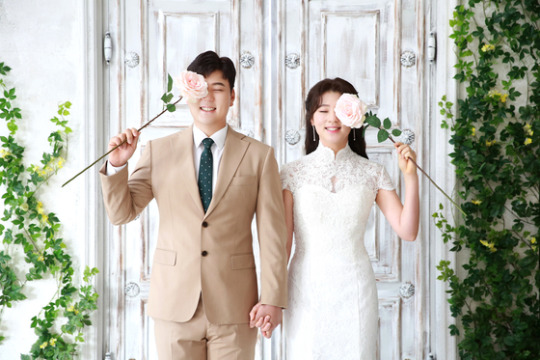
(Yonhap)
The 4B movement and Escape the Corset campaign have had a tremendous impact on the way young South Korean women view the countries cultural grip on women’s appearances and lives. Between 2015-2016 and 2017-2018, Korean women spent over 5 billion Korean Won less on beauty products and cosmetic surgeries, instead investing their money in cars and choosing independence over objectification. The movement is calling for boycotts of any business that uses sexist advertising, and encouraging women to eat at women-owned restaurants, drink in women-owned bars, and shop at women-owned stores—women’s money goes into the pockets of other women. Women’s universities have also been on the rise in South Korea, with most cities housing one or several women-only institutions. Similarly, women’s only spaces have begun to expand, women’s parking spots closer to entrances and exits in parking garages, women’s only hotel floors and common rooms, and women’s only subway cars. These spaces allow feminism to spread and flourish, and give Korean women the ability to find community with other women without the interference of men.
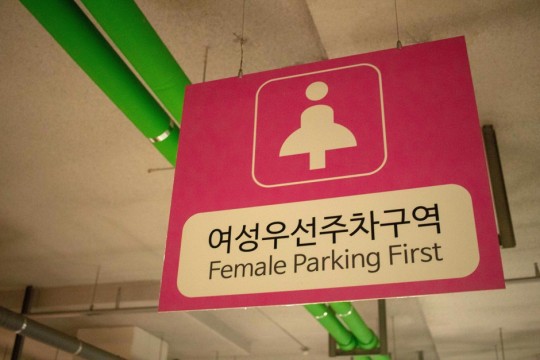
(Ian Baldessari/CityLab)
Since 2016, Exit 10 of Gangnam Station has become a symbolic site for South Korean feminism. The South Korean feminist movement developed out of particularly misogynist conditions within their country. The 4B movement represents a radical way that women have sought to create an online and offline world devoid of men—rather than engaging in arguments and altercations, they simply refuse to interact with men in every aspect of their lives. These actions have had a profound impact on the functionality of South Korean society and have opened an uncloseable door too the discussion of women’s rights.
McCurry, Justin. “Calls for Stalking Law Overhaul in South Korea as Woman’s Murder Shocks Nation.” The Guardian, Guardian News and Media, 23 Sept. 2022, www.theguardian.com/world/2022/sep/23/calls-for-stalking-law-overhaul-in-south-korea-as-womans-shocks-nation.
Teehan, Katie. “What Is the 4B Movement?” Service95, 16 Apr. 2024, www.service95.com/4b-movement-explainer/.
Izaakson , Jen, and Tae Kyung Kim. “The South Korean Women’s Movement: ‘We Are Not Flowers, We Are a Fire.’” Feminist Current, 16 June 2020, www.feministcurrent.com/2020/06/15/the-south-korean-womens-movement-we-are-not-flowers-we-are-a-fire/.
Lee, Min Joo. “Why so Many South Korean Women Are Refusing to Date, Marry or Have Kids.” Yahoo! News, Yahoo!, 15 May 2023, news.yahoo.com/why-many-south-korean-women-123250959.html?guccounter=1&guce_referrer=aHR0cHM6Ly93d3cuZ29vZ2xlLmNvbS8&guce_referrer_sig=AQAAAHmBVorK4v6bdzwcJMRyRdXkKtzUlpQYWn5Ot-BPzs-YRNNZFW5JBwC65OTaPrRImn3F3G56r0gfNydadUzlQtPS61hOi6uggk_OkwZqqvLvS-YN4HbPrpwKvK9_7g0e9yqu9fiRRvOVJkGRv__L7AZGoYtfHVxjKLLPDi9DI2fu.
Park, Seohoi Stephanie. “Murder at Gangnam Station: A Year Later.” KOREA EXPOSÉ, 2 Mar. 2023, koreaexpose.com/murder-gangnam-station-year-later/.
Dockeray, Hannah. “Why Some South Korean Women Are Rejecting Beauty.” Sky News, 14 July 2021, news.sky.com/story/plastic-surgery-south-korea-faces-beauty-backlash-11871654.
779 notes
·
View notes
Note
Please don’t use midjourney it steals art from pretty much every artist out there without any compensation. I didn’t know this at first and tried it but then during the creation process i saw water marks and Getty image logos (though I’m sure they’ve hidden that now) so it’s definitely stealing.
No, it isn't. And you've taken the wrong lesson from the Getty watermark issue.
AI training on public facing, published work is fair use. Any published piece could be located, examined, and learned from by a human artist. This does not require the permission of the owner of said work. A mechanical apparatus does not change this principle.
All we, as artists, own, are specific expressions. We do not own styles, ideas, concepts, plots, or tropes. We do not even own the work we create in a proper sense. All our work flows from the commons, and all of it flows back to it. IP is a limited patent on specific expressions, and what constitutes infringement is the end result of the creative process. What goes into it is irrelevant, and upending that process to put inspiration and reference as infringement is the end of art as we know it.
The Getty watermark issue is an example of overfitting, wherein a repetitive element in the dataset over-emphasizes specific features to the point of disrupting the system's attempts at the creation of novel images.
No one denies that the SD dataset is trained on images Getty claims to own, but Getty has so polluted the image search functions of the internet with their watermarked images that the idea of a getty watermark has been picked up the same way the AI might pick up the idea of an eye or a tree branch. It is a systemic failure that Shutterstock and Getty can be so monopolistic and ubiquitous that a dateset trained on literally everything public facing on the internet would be polluted with their watermarks.
Watermarks that, by the way, they add to public domain images, and that google prioritizes over clean versions.
The lawsuits being brought against Midjourney and Stable Diffusion are copyright overreach being presented as a theft tissue. The facts of the matter are not as the litigants state. The images aren't stored, the SD weights are a 4 gig file trained on 250 terabytes, roughly 4 bytes per image. It runs local, does not reach out to image sources over IP. All you've got are mathematical patterns and ratios. I would go so far as to say that the class action suit is based on outright lies.
But for a moment, let's entertain the idea that what goes into a work, as inspiration, can be copyrighted. That styles can be stolen. That what goes in defines infringement, rather than what comes out. What happens then?
Well, the bad news is that if Stable Diffusion and Midjourney were shut down tomorrow, Stable Diffusion is in the wild. It runs local, it's user-trainable. In short, the genie isn't going back in the bottle. Plus, the way diffusion AI works, there's no way to trace a gen to its sources. The weights don't work like that. The indexing would be larger than the entire set of stored patterns.
Well good news, there's an AI for that. The current version is called CLIP Interrogator And it works on everything. Not just AI generated, but any image. It can find what style it closely matches, reverse engineer a prompt. It's crude now, but it will improve.
Now, you've already established that using the same patterns as another work is infringement. You've already established that inspiration is theft. And now there's a robot that tells lawyers who you draw like.
Sure, you can fight it in court. If it goes go to court. But who's to say they won't just staplegun that AI to a monetization re-direction bot like youtube has going with their content ID? Awesome T-shirt design you uploaded to your print-on-demand shop... too bad your art style resembles that from a cartoon from 1973 that Universal got as part of an acquisition and they've claimed all your cash. Sure you can file a DMCA counter-notice, but we all know how that goes.
And then there's this fantasy that upending the system would help artists. But who would "own" that style? Is that piece stealing the style of Stephen Silver, or Disney's Kim Possible(TM)? When you work for Disney their contracts say everything you make is theirs. Every doodle. Every drawing. If the styles are copyrightable, a company could hire an artist straight out of school, publish their work under work-for-hire, fire them, and then go after them for "stealing" the style they developed while working for said corp.
Not to mention that a handful of companies own so much media that it is going to be impossible to find an artist that hasn't been influenced by something under their control.
Oh, and that stock of source images that companies like Disney and Universal have? These kinds of lawsuits won't stop them from building AIs with that material that they "own". The power goes into corp hands, they can down staff to their heart's content and everyone else is denied the ability to compete with them. Worst of all possible worlds.
Be careful what wishes you make when holding the copyright monkey's paw.
4K notes
·
View notes
Text










It Ends or It Doesn't by Caitlyn Siehl
It ends or it doesn't.
That's what you say. That's how you get through it.
The tunnel, the night,
the pain, the love.
It ends or it doesn't.
If the sun never comes up,
you find a way to live
without it.
If they don't come back,
you sleep in the middle of the bed,
learn how to make enough coffee
for yourself alone.
Adapt. Adjust.
It ends or it doesn't.
It ends or it doesn't.
We do not perish.
All the pics are taken from Getty images.
#florida panthers#panthers lb#hockey poetry#matthew tkachuk#aleksander barkov#aaron ekblad#sergei bobrovsky#sam bennett#gustav forsling#and like everyone else im too lazy to tag
150 notes
·
View notes
Text
LONG READ, BUT WORTH IT!!!
COD FANS, PRO-PALESTINIAN PALS, LISTEN TO ME FOR A SEC. I know this might be crazy, but hear me out. Just for a moment, I promise it'll be worth while. I thought for like 5 minutes on whether or not I should post this, but I say fuck it. My account isn't big, I'm not popular, but I know this will at least get on one persons page and get one persons attention and that's what matters.
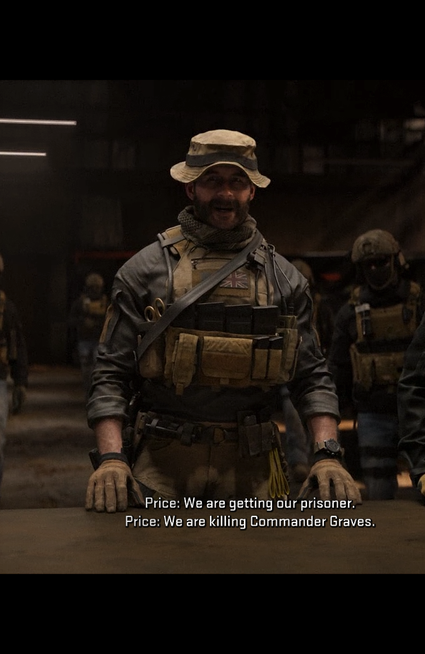
THIS MAN! THAT MAN UP THERE ^
COD besties love him, some people might not know who he is. His name is Johnathan Price, he's a fictional character played by Barry Sloane in the Modern Warfare 2 Remaster. Friends, take a close look to that thing around his neck.
Some of y'all think it looks familiar, right?
Me too. I might be slow on this, some people might've pointed it out on different platforms already, but I'm bringing it to attention anyway. It looks like a Kuffiyah. (Kuffiyeh? Kuffiya? Keffiyeh? I'm still a little confused on which spelling of the name is correct, so I'm using all of them). I might be crazy here, but it looks like one to me. If you don't know, a Kuffiyah is a Palestinian garment that, in very simplified terms, symbolizes their culture and freedom. I'm sure everyone already knows that that freedom has been threatened and that the people of Palestine are currently being slaughtered like cattle, no matter their age, sex, gender identity, etc. It's pure bloodshed of innocent people, a genocide, a holocaust if you need more terms.
I have a very simple theory that I don't think is hard to believe, but first let me show you what a Kuffiyah looks like for those who don't know.

Protesters at University of Michigan in the US, this month. Photograph: Anadolu/Getty Images
The black and white garment these people are wearing is a Kuffiyah. You can find numerous videos on TikTok and other platforms showing up-close images and videos of a Kuffiyah and explaining what the pattern symbolizes.
Now, if you need a second look at that scarf-like garment Captain Price is wearing around his neck, you can scroll back up. There also should be a video below, a clip taken directly from the game, that shows that same garment at different angles if you need a better view.
Now back to that talk of a theory.
Farah Karim, another Icon from the Modern Warfare games. Again, some of you might not know her, here's an image of her.
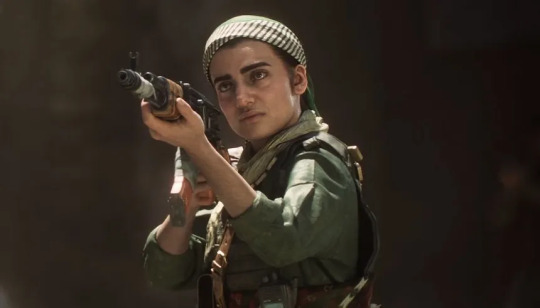
She's an occupant to a made-up Arabic country called Urzikstan that is located near the Black Sea. She's a solder, and leader, of the Urzikstan Liberation Force, which is an army that fights against the occupation and invasion of her country. In this case, Russia. Farah Karim and John Price are close and, in the games, team up to fight common enemies often. If you look at the country of Urzikstan on the map, in the COD universe, I believe it looks like the same area Palestine should be located on a map if it weren't for Israel's 70+ years of occupation and colonization on Palestinian land.
According to the games lore, the invasion and occupation of Urzikstan from Russia started in 1999, and I'm not sure if its confirmed but I believe it's at least once it's alluded to Price having helped the ULF (Urzikstan Liberation Force) fight off the Russian occupation and free the country.
By this point, I'm sure at least one of you incredibly intelligent people reading this post have figured out what my theory is exactly:
Urzikstan is Palestine in the COD Universe. Or, at the very least, is modeled after and has its history inspired by the very real horrors Palestine has been facing since around 1947 when one of the first/the first attack(s) on Palestine took place on December 31st (Here is an article you can read about that, and there are plenty of similar articles from that outlet). Some of you probably have stopped reading, or think I'm crazy, or something along those lines, but hear me out for a second.
That Kuffiyah that Captain Price is wearing, remember that? People who are in support of Palestine are buying and wearing those to help financially aid Palestinians who can still sell their goods and show their support. I believe that is exactly what Price did, and why he's wearing it.
Now, I raise a question to those who weren't in support before. If Captain Johnathan Price can do something so basic is show support for a population and help fight for a countries freedom, why can't you? It's not hard to reblog a post, or sign a petition, or attend a protest in your area, or at the very least educate yourself on the matter. So, if you aren't, why? If someone who I know most, if not all, of the COD community here on Tumblr loves can do it, can go to war and fight for it, then why can't you do something that's real?
Free Palestine, and have a nice day/night to those of you who actually read all of this to the end.
#from the river to the sea#palestine will be free#free palestine#Captain Price#call of duty#john price#gaza#palestine#free gaza#gaza genocide#captain john price#task force 141#tf141#cod mwii#cod mw2#cod#modern warfare#call of duty modern warfare#support palestine#save palestine#free palestine 🇵🇸#farah karim#farah cod#from the river to the sea palestine will be free#bunny's carrots
198 notes
·
View notes
Text


I haven't posted my own art in a while, so here's a zine piece I made last year for Love Letter To Unova (at @pkmnbwzine), I did Heatmor but inspired by medieval bestiary illustrations, honestly a very fun piece for a mon with a really underrated design.
The zine is free to download so you can go check it out right now if you wish to do so!
note: you can find an image id inside the alt text option for all images featured in this post.
(as an extra, here's two of the medieval drawings that I referenced, taken from the Getty Museum Collection)


#peryton's art#edit: i put the image ids in alt text following some searching about user preference#if anyone wants me to add image ids outside alt text just let me know#pokemon#pkmn#art zine#heatmor#pokemon bw#fandom zine#zine art#watercolor#gouache#artists on tumblr
70 notes
·
View notes
Text
Couch surfer in his 30s. Oscar winner in his 40s. Why the whole world wants Taika
**Notes: This is very long post!**
Good Weekend
In his 30s, he was sleeping on couches. By his 40s, he’d directed a Kiwi classic, taken a Marvel movie to billion-dollar success, and won an Oscar. Meet Taika Waititi, king of the oddball – and one of New Zealand’s most original creative exports.
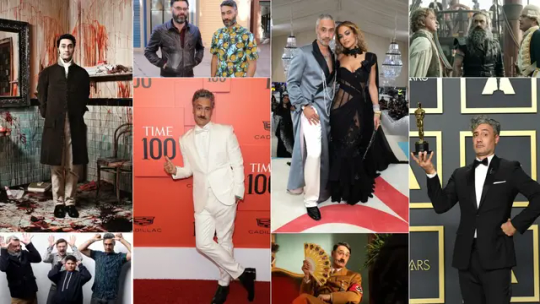
Taika Waititi: “Be a nice person and live a good life. And just don’t be an arsehole.”
The good news? Taika Waititi is still alive. I wasn’t sure. The screen we were speaking through jolted savagely a few minutes ago, with a cacophonous bang and a confused yelp, then radio silence. Now the Kiwi filmmaker is back, grinning like a loon: “I just broke the f---ing table, bro!”
Come again? “I just smashed this f---ing table and glass flew everywhere. It’s one of those old annoying colonial tables. It goes like this – see that?” Waititi says, holding up a folding furniture leg. “I hit the mechanism and it wasn’t locked. Anyway …”
I’m glad he’s fine. The stuff he’s been saying from his London hotel room could incur biblical wrath. We’re talking about his latest project, Next Goal Wins, a movie about the American Samoa soccer team’s quest to score a solitary goal, 10 years after suffering the worst loss in the game’s international history – a 31-0 ignominy to Australia – but our chat strays into spirituality, then faith, then religion.
“I don’t personally believe in a big guy sitting on a cloud judging everyone, but that’s just me,” Waititi says, deadpan. “Because I’m a grown-up.”
This is the way his interview answers often unfold. Waititi addresses your topic – dogma turns good people bad, he says, yet belief itself is worth lauding – but bookends every response with a conspiratorial nudge, wink, joke or poke. “Regardless of whether it’s some guy living on a cloud, or some other deity that you’ve made up – and they’re all made up – the message across the board is the same, and it’s important: Be a nice person, and live a good life. And just don’t be an arsehole!”
Not being an arsehole seems to have served Waititi, 48, well. Once a national treasure and indie darling (through the quirky tenderness of his breakout New Zealand films Boy in 2010 and Hunt for the Wilderpeople in 2016), Waititi then became a star of both the global box office (through his 2017 entry into the Marvel Universe, Thor: Ragnarok, which grossed more than $1.3 billion worldwide) and then the Academy Awards (winning the 2020 best adapted screenplay Oscar for his subversive Holocaust dramedy JoJo Rabbit, in which he played an imaginary Hitler).

Waititi playing Adolf Hitler in the 2019 movie JoJo Rabbit. (Alamy)
A handsome devil with undeniable roguish charm, Waititi also slid seamlessly into style-icon status (attending this year’s Met Gala shirtless, in a floor-length gunmetal-grey Atelier Prabal Gurung wrap coat, with pendulous pearl necklaces), as well as becoming his own brand (releasing an eponymous line of canned coffee drinks) and bona fide Hollywood A-lister (he was introduced to his second wife, British singer Rita Ora, by actor Robert Pattinson at a barbecue).
Putting that platform to use, Waititi is an Indigenous pioneer and mentor, too, co-creating the critically acclaimed TV series Reservation Dogs, while co-founding the Piki Films production company, committed to promoting the next generation of storytellers – a mission that might sound all weighty and worthy, yet Waititi’s new wave of First Nations work is never earnest, always mixing hurt with heart and howling humour.

Waititi with wife Rita Ora at the 2023 Met Gala in May. (Getty Images)
Makes sense. Waititi is a byproduct of “the weirdest coupling ever” – his late Maori father from the Te Whanau-a-Apanui tribe was an artist, farmer and “Satan’s Slaves” bikie gang founder, while his Wellington schoolteacher mum descended from Russian Jews, although he’s not devout about her faith. (“No, I don’t practise,” he confirms. “I’m just good at everything, straight away.”)
He’s remained loyally tethered to his origin story, too – and to a cadre of creative Kiwi mates, including actors Jemaine Clement and Rhys Darby – never forgetting that not long before the actor/writer/producer/director was an industry maven, he was a penniless painter/photographer/ musician/comedian.
With no set title and no fixed address, he’s seemingly happy to be everything, everywhere (to everyone) all at once. “‘The universe’ is bandied around a lot these days, but I do believe in the kind of connective tissue of the universe, and the energy that – scientifically – we are made up of a bunch of atoms that are bouncing around off each other, and some of the atoms are just squished together a bit tighter than others,” he says, smiling. “We’re all made of the same stardust, and that’s pretty special.”
-----------------------------------------------
We’ve caught Waititi in a somewhat relaxed moment, right before the screen actors’ and media artists’ strike ends. He’s sensitive to the struggle but doesn’t deny enjoying the break. “I spent a lot of time thinking about writing, and not writing, and having a nice holiday,” he tells Good Weekend. “Honestly, it was a good chance just to recombobulate.”
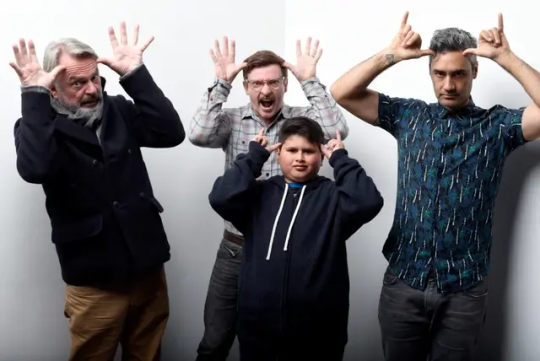
Waititi, at right, with Hunt for the Wilderpeople actors, from left, Sam Neill, Rhys Darby and Julian Dennison. (Getty Images)
It’s mid-October, and he’s just headed to Paris to watch his beloved All Blacks in the Rugby World Cup. He’s deeply obsessed with the game, and sport in general. “Humans spend all of our time knowing what’s going to happen with our day. There’s no surprises any more. We’ve become quite stagnant. And I think that’s why people love sport, because of the air of unpredictability,” he says. “It’s the last great arena entertainment.”
The main filmic touchstone for Next Goal Wins (which premieres in Australian cinemas on New Year’s Day) would be Cool Runnings (1993), the unlikely true story of a Jamaican bobsled team, but Waititi also draws from genre classics such as Any Given Sunday and Rocky, sampling trusted tropes like the musical training montage. (His best one is set to Everybody Wants to Rule the World by Tears for Fears.)
Filming in Hawaii was an uplifting experience for the self-described Polynesian Jew. “It wasn’t about death, or people being cruel to each other. Thematically, it was this simple idea, of getting a small win, and winning the game wasn’t even their goal – their goal was to get a goal,” he says. “It was a really sweet backbone.”
Waititi understands this because, growing up, he was as much an athlete as a nerd, fooling around with softball and soccer before discovering rugby league, then union. “There’s something about doing exercise when you don’t know you’re doing exercise,” he enthuses. “It’s all about the fun of throwing a ball around and trying to achieve something together.” (Whenever Waititi is in Auckland he joins his mates in a long-running weekend game of touch rugby. “And then throughout the week I work out every day. Obviously. I mean, look at me.”)
Auckland is where his kids live, too, so he spends as much time there as possible. Waititi met his first wife, producer Chelsea Winstanley, on the set of Boy in 2010, and they had two daughters, Matewa Kiritapu, 8, and his firstborn, Te Kainga O’Te Hinekahu, 11. (The latter is a derivative of his grandmother’s name, but he jokes with American friends that it means “Resurrection of Tupac” or “Mazda RX7″) Waititi and Winstanley split in about 2018, and he married the pop star Ora in 2022.
He offers a novel method for balancing work with parenthood … “Look, you just abandon them, and know that the experience will make them harder individuals later on in life. And it’s their problem,” he says. “I’m going to give them all of the things that they need, and I’m going to leave behind a decent bank account for their therapy, and they will be just like me, and the cycle will continue.”
Jokes aside – I think he’s joking – school holidays are always his, and he brings the girls onto the set of every movie he makes. “They know enough not to get in the way or touch anything that looks like it could kill you, and they know to be respectful and quiet when they need to. But they’re just very comfortable around filmmakers, which I’m really happy about, because eventually I hope they will get into the industry. One more year,” he laughs, “then they can leave school and come work for Dad.”
Theirs is certainly a different childhood than his. Growing up, he was a product of two worlds. His given names, for instance, were based on his appearance at birth: “Taika David” if he looked Maori (after his Maori grandfather) and “David Taika” if he looked Pakeha (after his white grandfather). His parents split when he was five, so he bounced between his dad’s place in Waihau Bay, where he went by the surname Waititi, and his mum, eight hours drive away in Wellington, where he went by Cohen (the last name on his birth certificate and passport).
Waititi was precocious, even charismatic. His mother Robin once told Radio New Zealand that people always wanted to know him, even as an infant: “I’d be on a bus with him, and he was that kind of baby who smiled at people, and next thing you know they’re saying, ‘Can I hold your baby?’ He’s always been a charmer to the public eye.”
He describes himself as a cool, sporty, good-looking nerd, raised on whatever pop culture screened on the two TV channels New Zealand offered in the early 1980s, from M*A*S*H and Taxi to Eddie Murphy and Michael Jackson. He was well-read, too. When punished by his mum, he would likely be forced to analyse a set of William Blake poems.
He puts on a whimpering voice to describe their finances – “We didn’t have much monneeey” – explaining how his mum spent her days in the classroom but also worked in pubs, where he would sit sipping a raspberry lemonade, doodling drawings and writing stories. She took in ironing and cleaned houses; he would help out, learning valuable lessons he imparts to his kids. “And to random people who come to my house,” he says. “I’ll say, ‘Here’s a novel idea, wash this dish,’ but people don’t know how to do anything these days.”
“Every single character I’ve ever written has been based on someone I’ve known or met or a story I’ve stolen from someone.” - Taika Waititi
He loved entertaining others, clearly, but also himself, recording little improvised radio plays on a tape deck – his own offbeat versions of ET and Indiana Jones and Star Wars. “Great free stuff where you don’t have any idea what the story is as you’re doing it,” he says. “You’re just sort of making it up and enjoying the freedom of playing god in this world where you can make people and characters do whatever you want.”
His other sphere of influence lay in Raukokore, the tiny town where his father lived. Although Boy is not autobiographical, it’s deeply personal insofar as it’s filmed in the house where he grew up, and where he lived a life similar to that portrayed in the story, surrounded by his recurring archetypes: warm grandmothers and worldly kids; staunch, stoic mums; and silly, stunted men. “Every single character I’ve ever written has been based on someone I’ve known or met,” he says, “or a story I’ve stolen from someone.”
He grew to love drawing and painting, obsessed early on with reproducing the Sistine Chapel. During a 2011 TED Talk on creativity, Waititi describes his odd subject matter, from swastikas and fawns to a picture of an old lady going for a walk … upon a sword … with Robocop. “My father was an outsider artist, even though he wouldn’t know what that meant,” Waititi told the audience in Doha. “I love the naive. I love people who can see things through an innocent viewpoint. It’s inspiring.”

After winning Best Adapted Screenplay Academy Award for JoJo Rabbit in 2020. (Getty Images)
It was an interesting time in New Zealand, too – a coming-of-age decade in which the Maori were rediscovering their culture. His area was poor, “but only financially,” he says. “It’s very rich in terms of the people and the culture.” He learned kapa haka – the songs, dances and chants performed by competing tribes at cultural events, or to honour people at funerals and graduations – weddings, parties, anything. “Man, any excuse,” he explains. “A big part of doing them is to uplift your spirits.”
Photography was a passion, so I ask what he shot. “Just my penis. I sent them to people, but we didn’t have phones, so I would print them out, post them. One of the first dick pics,” he says. Actually, his lens was trained on regular people. He watches us still – in airports, restaurants. “Other times late at night, from a tree. Whatever it takes to get the story. You know that.”
He went to the Wellington state school Onslow College and did plays like Androcles and the Lion, A Midsummer Night’s Dream and The Crucible. His crew of arty students eventually ended up on stage at Bats Theatre in the city, where they would perform haphazard comedy shows for years.
“Taika was always rebellious and wild in his comedy, which I loved,” says his high school mate Jackie van Beek, who became a longtime collaborator, including working with Waititi on a Tourism New Zealand campaign this year. “I remember he went through a phase of turning up in bars around town wearing wigs, and you’d try and sit down and have a drink with him but he’d be doing some weird character that would invariably turn up in some show down the track.”
He met more like-minded peers at Victoria University, including Jemaine Clement (who’d later become co-creator of Flight of the Conchords). During a 2019 chat with actor Elijah Wood, Waititi describes he and Clement clocking one another from opposite sides of the library one day: a pair of Maoris experiencing hate at first sight, based on a mutual suspicion of cultural appropriation. (Clement was wearing a traditional tapa cloth Samoan shirt, and Waititi was like: “This motherf---er’s not Samoan.” Meanwhile, Waititi was wearing a Rastafarian beanie, and Clement was like, “This motherf---er’s not Jamaican.”)

With Jemaine Clement in 2014. (Getty Images)
But they eventually bonded over Blackadder and Fawlty Towers, and especially Kenny Everett, and did comedy shows together everywhere from Edinburgh to Melbourne. Waititi was almost itinerant, spending months at a time busking, or living in a commune in Berlin. He acted in a few small films, and then – while playing a stripper on a bad TV show – realised he wanted to try life behind the camera. “I became tired of being told what to do and ordered around,” he told Wellington’s Dominion Post in 2004. “I remember sitting around in the green room in my G-string thinking, ‘Why am I doing this? Just helping someone else to realise their dream.’ ”
He did two strong short films, then directed his first feature – Eagle vs Shark (2007) – when he was 32. He brought his mates along (Clement, starring with Waititi’s then-girlfriend Loren Horsley), setting something of a pattern in his career: hiring friends instead of constantly navigating new working relationships. “If you look at things I’m doing,” he tells me, “there’s always a few common denominators.”
Sam Neill says Waititi is the exemplar of a new New Zealand humour. “The basis of it is this: we’re just a little bit crap at things.”
This gang of collaborators shares a common Kiwi vibe, too, which his longtime friend, actor Rhys Darby, once coined “the comedy of the mundane”. Their new TV show, Our Flag Means Death, for example, leans heavily into the mundanity of pirate life – what happens on those long days at sea when the crew aren’t unsheathing swords from scabbards or burying treasure.
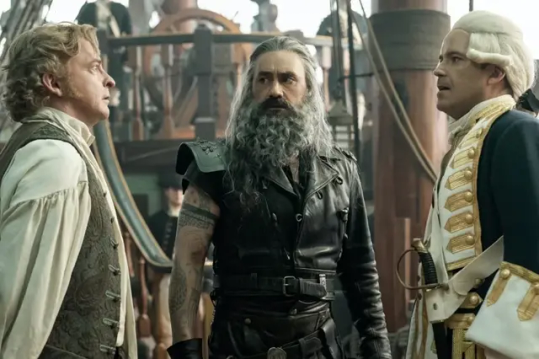
Waititi plays pirate captain Blackbeard, centre, in Our Flag Means Death, with Rhys Darby, left, and Rory Kinnear. (Google Images)
Sam Neill, who first met Waititi when starring in Hunt for the Wilderpeople, says Waititi is the exemplar of a new New Zealand humour. “And I think the basis of it is this,” says Neill. “We’re just a little bit crap at things, and that in itself is funny.” After all, Neill asks, what is What We Do in The Shadows (2014) if not a film (then later a TV show) about a bunch of vampires who are pretty crap at being vampires, living in a pretty crappy house, not quite getting busted by crappy local cops? “New Zealand often gets named as the least corrupt country in the world, and I think it’s just that we would be pretty crap at being corrupt,” Neill says. “We don’t have the capacity for it.”
Waititi’s whimsy also spurns the dominant on-screen oeuvre of his homeland – the so-called “cinema of unease” exemplified by the brutality of Once Were Warriors (1994) and the emotional peril of The Piano (1993). Waititi still explores pathos and pain, but through laughter and weirdness. “Taika feels to me like an antidote to that dark aspect, and a gift somehow,” Neill says. “And I’m grateful for that.”
-----------------------------------------------
Something happened to Taika Waititi when he was about 11 – something he doesn’t go into with Good Weekend, but which he considered a betrayal by the adults in his life. He mentioned it only recently – not the moment itself, but the lesson he learnt: “That you cannot and must not rely on grown-ups to help you – you’re basically in the world alone, and you’re gonna die alone, and you’ve just gotta make it all for yourself,” he told Irish podcast host James Brown. “I basically never forgave people in positions of responsibility.”
What does that mean in his work? First, his finest films tend to reflect the clarity of mind possessed by children, and the unseen worlds they create – fantasies conjured up as a way to understand or overcome. (His mum once summed up the main message of Boy: “The unconditional love you get from your children, and how many of us waste that, and don’t know what we’ve got.”)
Second, he’s suited to movie-making – “Russian roulette with art” – because he’s drawn to disruptive force and chaos. And that in turn produces creative defiance: allowing him to reinvigorate the Marvel Universe by making superheroes fallible, or tell a Holocaust story by making fun of Hitler. “Whenever I have to deal with someone who’s a boss, or in charge, I challenge them,” he told Brown, “and I really do take whatever they say with a pinch of salt.”
It’s no surprise then that Waititi was comfortable leaping from independent films to the vast complexity of Hollywood blockbusters. He loves the challenge of coordinating a thousand interlocking parts, requiring an army of experts in vocations as diverse as construction, sound, art, performance and logistics. “I delegate a lot,” he says, “and share the load with a lot of people.”
“This is a cool concept, being able to afford whatever I want, as opposed to sleeping on couches until I was 35.” - Taika Waititi
But the buck stops with him. Time magazine named Waititi one of its Most Influential 100 People of 2022. “You can tell that a film was made by Taika Waititi the same way you can tell a piece was painted by Picasso,” wrote Sacha Baron Cohen. Compassionate but comic. Satirical but watchable. Rockstar but auteur. “Actually, sorry, but this guy’s really starting to piss me off,” Cohen concluded. “Can someone else write this piece?”
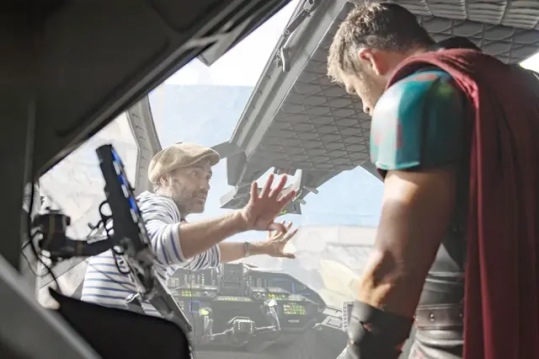
Directing Chris Hemsworth in 2017 in Thor: Ragnarok, which grossed more than $1.3 billion at the box office. (Alamy)
I’m curious to know how he stays grounded amid such adulation. Coming into the game late, he says, helped immensely. After all, Waititi was 40 by the time he left New Zealand to do Thor: Ragnarok. “If you let things go to your head, then it means you’ve struggled to find out who you are,” he says. “But I’ve always felt very comfortable with who I am.” Hollywood access and acclaim – and the pay cheques – don’t erase memories of poverty, either. “It’s more like, ‘Oh, this is a cool concept, being able to afford whatever I want, as opposed to sleeping on couches until I was 35.’ ” Small towns and strong tribes keep him in check, too. “You know you can’t piss around and be a fool, because you’re going to embarrass your family,” he says. “Hasn’t stopped me, though.”
Sam Neill says there was never any doubt Waititi would be able to steer a major movie with energy and imagination. “It’s no accident that the whole world wants Taika,” he says. “But his seductiveness comes with its own dangers. You can spread yourself a bit thin. The temptation will be to do more, more, more. That’ll be interesting to watch.”
Indeed, I find myself vicariously stressed out over the list of potential projects in Waititi’s future. A Roald Dahl animated series for Netflix. An Apple TV show based on the 1981 film Time Bandits. A sequel to What We Do In The Shadows. A reboot of Flash Gordon. A gonzo horror comedy, The Auteur, starring Jude Law. Adapting a cult graphic novel, The Incal, as a feature. A streaming series based on the novel Interior Chinatown. A film based on a Kazuo Ishiguro bestseller. Plus bringing to life the wildly popular Akira comic books. Oh, and for good measure, a new instalment of Star Wars, which he’s already warned the world will be … different.
“It’s going to change things,” he told Good Morning America. “It’s going to change what you guys know and expect.”
Did I say I was stressed for Waititi? I meant physically sick.
“Well…” he qualifies, “some of those things I’m just producing, so I come up with an idea or someone comes to me with an idea, and I shape how ‘it’s this kind of show’ and ‘here’s how we can get it made.’ It’s easier for me to have a part in those things and feel like I’ve had a meaningful role in the creative process, but also not having to do what I’ve always done, which is trying to control everything.”

In the 2014 mockumentary horror film What We Do in the Shadows, which he co-directed with Jemaine Clement. (Alamy)
What about moving away from the niche New Zealand settings he represented so well in his early work? How does he stay connected to his roots? “I think you just need to know where you’re from,” he says, “and just don’t forget that.”
They certainly haven’t forgotten him.
Jasmin McSweeney sits in her office at the New Zealand Film Commission in Wellington, surrounded by promotional posters Waititi signed for her two decades ago, when she was tasked with promoting his nascent talent. Now the organisation’s marketing chief, she talks to me after visiting the heart of thriving “Wellywood”, overseeing the traditional karakia prayer on the set of a new movie starring Geoffrey Rush.
Waititi isn’t the first great Kiwi filmmaker – dual Oscar-winner Jane Campion and blockbuster king Peter Jackson come to mind – yet his particular ascendance, she says, has spurred unparalleled enthusiasm. “Taika gave everyone here confidence. He always says, ‘Don’t sit around waiting for people to say, you can do this.’ Just do it, because he just did it. That’s the Taika effect.”
-----------------------------------------------
Taika David Waititi is known for wearing everything from technicolour dreamcoats to pineapple print rompers, and today he’s wearing a roomy teal and white Isabel Marant jumper. The mohair garment has the same wispy frizz as his hair, which curls like a wave of grey steel wool, and connects with a shorn salty beard.
A stylish silver fox, it wouldn’t surprise anyone if he suddenly announced he was launching a fashion label. He’s definitely a commercial animal, to the point of directing television commercials for Coke and Amazon, along with a fabulous 2023 spot for Belvedere vodka starring Daniel Craig. He also joined forces with a beverage company in Finland (where “taika” means “magic”) to release his coffee drinks. Announcing the partnership on social media, he flagged that he would be doing more of this kind of stuff, too (“Soz not soz”).
Waititi has long been sick of reverent portrayals of Indigenous people talking to spirits.
There’s substance behind the swank. Fashion is a creative outlet but he’s also bought sewing machines in the past with the intention of designing and making clothes, and comes from a family of tailors. “I learnt how to sew a button on when I was very young,” he says. “I learnt how to fix holes or patches in your clothes, and darn things.”
And while he gallivants around the globe watching Wimbledon or modelling for Hermès at New York Fashion Week, all that glamour belies a depth of purpose, particularly when it comes to Indigenous representation.
There’s a moment in his new movie where a Samoan player realises that their Dutch coach, played by Michael Fassbender, is emotionally struggling, and he offers a lament for white people: “They need us.” I can’t help but think Waititi meant something more by that line – maybe that First Nations people have wisdom to offer if others will just listen?
“Weeelllll, a little bit …” he says – but from his intonation, and what he says next, I’m dead wrong. Waititi has long been sick of reverent portrayals of Indigenous people talking to kehua (spirits), or riding a ghost waka (phantom canoe), or playing a flute on a mountain. “Always the boring characters,” he says. “They’ve got no real contemporary relationship with the world, because they’re always living in the past in their spiritual ways.”

A scene from Next Goal Wins, filmed earlier this year. (Alamy)
He’s part of a vanguard consciously poking fun at those stereotypes. Another is the Navajo writer and director Billy Luther, who met Waititi at Sundance Film Festival back in 2003, along with Reservation Dogs co-creator Sterlin Harjo. “We were this group of outsiders trying to make films, when nobody was really biting,” says Luther. “It was a different time. The really cool thing about it now is we’re all working. We persevered. We didn’t give up. We slept on each other’s couches and hung out. It’s like family.”
Waititi has power now, and is known for using Indigenous interns wherever possible (“because there weren’t those opportunities when I was growing up”), making important introductions, offering feedback on scripts, and lending his name to projects through executive producer credits, too, which he did for Luther’s new feature film, Frybread Face and Me (2023).
He called Luther back from the set of Thor: Love and Thunder (2022) to offer advice on working with child actors – “Don’t box them into the characters you’ve created,” he said, “let them naturally figure it out on their own” – but it’s definitely harder to get Waititi on the phone these days. “He’s a little bitch,” Luther says, laughing. “Nah, there’s nothing like him. He’s a genius. You just knew he was going to be something. I just knew it. He’s my brother.“
I’ve been asked to explicitly avoid political questions in this interview, probably because Waititi tends to back so many causes, from child poverty and teenage suicide to a campaign protesting offshore gas and oil exploration near his tribal lands. But it’s hard to ignore his recent Instagram post, sharing a viral video about the Voice to Parliament referendum starring Indigenous Aussie rapper Adam Briggs. After all, we speak only two days after the proposal is defeated. “Yeah, sad to say but, Australia, you really shat the bed on that one,” Waititi says, pausing. “But go see my movie!”
About that movie – the early reviews aren’t great. IndieWire called it a misfire, too wrapped in its quirks to develop its arcs, with Waititi’s directorial voice drowning out his characters, while The Guardian called it “a shoddily made and strikingly unfunny attempt to tell an interesting story in an uninteresting way”. I want to know how he moves past that kind of criticism. “For a start, I never read reviews,” he says, concerned only with the opinion of people who paid for admission, never professional appraisals. “It’s not important to me. I know I’m good at what I do.”
Criticism that Indigenous concepts weren’t sufficiently explained in Next Goal Wins gets his back up a little, though. The film’s protagonist, Jaiyah Saelua, the first transgender football player in a FIFA World Cup qualifying match, is fa’afafine – an American Samoan identifier for someone with fluid genders – but there wasn’t much exposition of this concept in the film. “That’s not my job,” Waititi says. “It’s not a movie where I have to explain every facet of Samoan culture to an audience. Our job is to retain our culture, and present a story that’s inherently Polynesian, and if you don’t like it, you can go and watch any number of those other movies out there, 99 per cent of which are terrible.”
*notes: (there is video clip in the article)
Waititi sounds momentarily cranky, but he’s mostly unflappable and hilarious. He’s the kind of guy who prefers “Correctumundo bro!” to “Yes”. When our video connection is too laggy, he plays up to it by periodically pretending to be frozen, sitting perfectly still, mouth open, his big shifting eyeballs the only giveaway.
He’s at his best on set. Saelua sat next to him in Honolulu while filming the joyous soccer sequences. “He’s so chill. He just let the actors do their thing, giving them creative freedom, barely interjecting unless it was something important. His style matches the vibe of the Pacific people. We’re a very funny people. We like to laugh. He just fit perfectly.”
People do seem to love working alongside him, citing his ability to make productions fresh and unpredictable and funny. Chris Hemsworth once said that Waititi’s favourite gag is to “forget” that his microphone is switched on, so he can go on a pantomime rant for all to hear – usually about his disastrous Australian lead actor – only to “remember” that he’s wired and the whole crew is listening.
“I wouldn’t know about that, because I don’t listen to what other people say about anything – I’ve told you this,” Waititi says. “I just try to have fun when there’s time to have fun. And when you do that, and you bring people together, they’re more willing to go the extra mile for you, and they’re more willing to believe in the thing that you’re trying to do.”
Yes, he plays music between takes, and dances out of his director’s chair, but it’s really all about relaxing amid the immense pressure and intense privilege of making movies. “Do you know how hard it is just to get anything financed or green-lit, then getting a crew, getting producers to put all the pieces together, and then making it to set?” Waititi asks. “It’s a real gift, even to be working, and I feel like I have to remind people of that: enjoy this moment.”
Source: The Age
By: Konrad Marshall (December 1, 2023)
198 notes
·
View notes
Text
OBITUARY
BOB BRYAR, FORMER DRUMMER OF MY CHEMICAL ROMANCE, DEAD AT 44
The musician performed with the rock band on The Black Parade and Danger Days after joining in 2004
By EMILY ZEMLER
NOVEMBER 30, 2024
Full article under the cut:

Bob Bryar of My Chemical Romance performs at Big Day Out Festival 2007 at the Sydney Showground. PAUL MCCONNELL/GETTY IMAGES
Bob Bryar, the drummer of My Chemical Romance from 2004 to 2010, has died at the age of 44, Rolling Stone has confirmed.
“The band asks for your patience and understanding as they process the news of Bob’s passing,” a spokesperson for the band tells Rolling Stone.
Details surrounding his death were not given, but law enforcement sources told TMZ the musician was found in his Tennessee home, and no foul play is suspected. The medical examiner is investigating the cause of Bryar’s death.
Born in Chicago in 1979, Bryar started playing drums at a young age and got a degree in sound engineering from the University of Florida before becoming a touring sound engineer. He worked for Thrice and the Used and met My Chemical Romance while on tour with the Used in 2004.
Later that year, My Chemical Romance replaced drummer Matt Pelissier shortly after the release of the New Jersey rock band’s second LP, Three Cheers for Sweet Revenge. He went on to perform on three of the band’s subsequent releases, including their seminal 2006 album, The Black Parade, and their 2010 effort, Danger Days: The True Lives of the Fabulous Killjoys.
“This was the biggest record I have ever done and I was nervous,” Bryar recalled of recording The Black Parade in an interview with Alternative Press. “Along with being nervous, we all had to feel out the writing dynamic between all of us. I was very vocal about my drum parts, but let the other dudes do their thing because they were doing so well and didn’t need anyone chiming in every second. That leads me to remember one situation where it was super-late and only G, the engineer and myself were at the studio. There was a vocal harmony that I kept hearing. It was the first time I got the balls to ask someone to try something. That idea made it to the record, which was really nice for me to see happen.”
He added, “As we were recording the record, I was getting more and more excited. It was turning out to be a very complete and a very entertaining audio story… I really feel every part of that record, down to the artwork, is pretty unbeatable. I hope those songs will be around for a long time.”
Bryar departed from My Chemical Romance, who later disbanded in 2013, following the release of Danger Days, although he performed on the band’s singles collection, Conventional Weapons. Band member Frank Iero confirmed in a statement that Bryar’s exit was “a painful decision for all of us to make and was not taken lightly.” He added, “We wish him the best of luck in his future endeavors and expect you all to do the same.”
My Chemical Romance replaced Bryar from 2011-2013 with Jarrod Alexander, who also joined the band for their 2022 reunion tour. After leaving the band, Bryar continued to tour behind the scenes with various bands and became involved in dog rescue charities and sanctuaries. In 2014, he quit the music industry to pursue a career in real estate.
In 2021, Bryar auctioned off the drum kit used during the band’s 2005 MTV VMAs performance to raise money for the Williamson County Animal Control and Adoption Center in Tennessee. “It’s my favorite finish of all of the kits I’ve had,” he wrote of the set. “If you look closely, there is still some confetti from tour that snuck into the bass drum hole. I’ll leave that in there for you.” In 2022, Bryar announced he would be selling his original Black Parade uniform to help “abandoned and sheltered animals in areas of Florida and South Carolina that are affected by Hurricane Ian.”
END
#mikey way#bob bryar#mcr#rolling stone#live#lltbp#bp#2024#nov 2024#11/30/24#11/29/24#2007#text#photo#originals
26 notes
·
View notes
Note
“With the tree of life behind them and the garden representing fertility, life and moving forward, they didn’t need any direction,” said photographer Misan Harriman of shooting that moment.” Didn’t he later admit he added the tree of life to that picture after the fact? Could explain why they needed no direction if they’re just lying in an empty field.
Well, it’s a bit complicated.
First, Misan went on BBC Radio’s Private Passions podcast in March 2022. He was asked about the photo session and spoke about the willow tree.
Here’s the podcast episode, unfortunately only available to listen in the UK at this point. (While the podcast is available on Spotify, this episode - among many others - are missing so I suspect BBC Radio is being selective what they post.)
(Posting this without having listened to it. I couldn’t find a transcript to follow along with.)
Tom Bower gave the episode a listen and used it as a reference for Revenge:
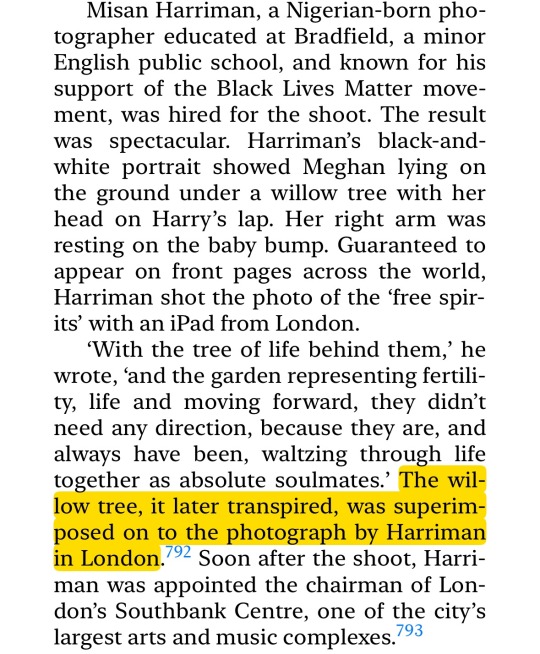
Back in 2021 after the photo was originally published, Misan gave an interview to Good Morning Today, an American breakfast show on NBC (fyi, then-bestie Gayle King is with CBS). You can read about Misan’s interview and his comments here:
Then Getty killed the Waleses’ Mother’s Day photo for editing and people began complaining about the Sussexes’ photos being edited, citing Misan’s comments on BBC Radio, to which Misan responded:
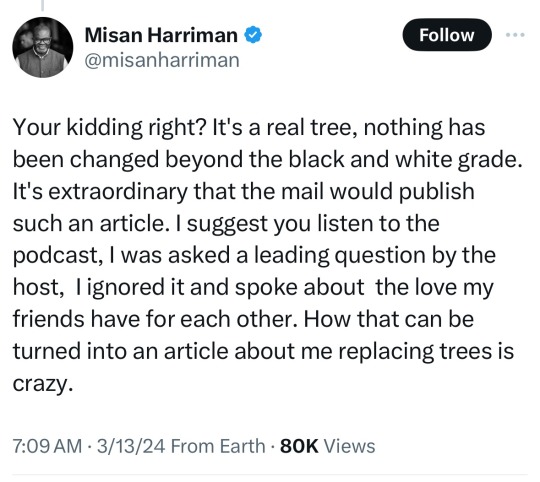
Misan was furious enough that eventually he released the original photograph he took and some metadata to prove that all he did was apply a black and white filter, which is in line with Getty’s requirements.
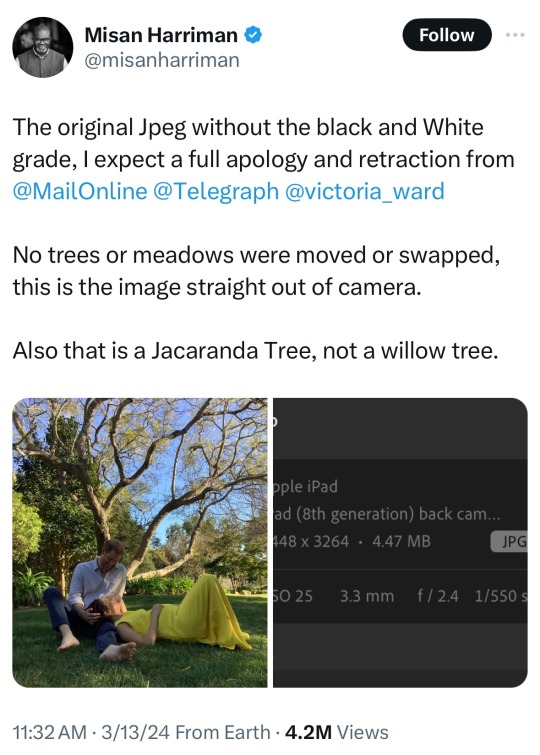
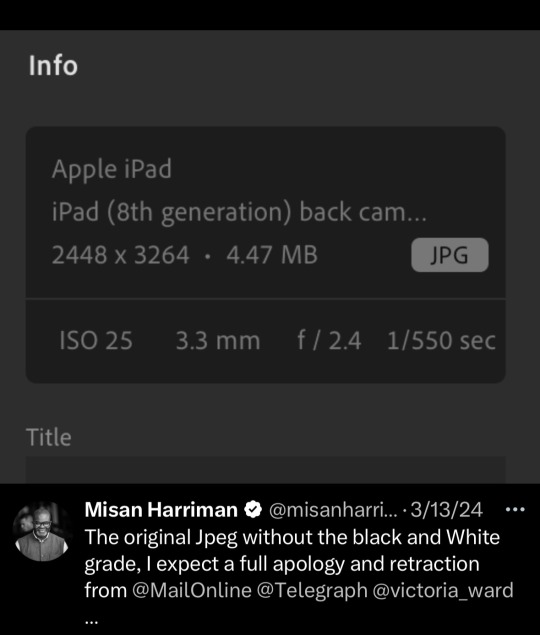
Personally, releasing the metadata doesn’t give any proof that he manipulated image. All he did was show us the real photo and its metadata, but what he needs to do is show the metadata of the black and white photo. That’s where the proof is.
And note that there’s no timestamp or date on the metadata screenshot. So how do we know he’s showing us the metadata for the correct image?
But don’t forget that there were two images created for the pregnancy announcement. Yes, there’s the one where they’re sitting/lying down, but there’s also this one:

For which there’s no metadata and that even Misan himself seems to have forgotten that he took. It supposedly was taken in the same iPad photo shoot, but not included in the pregnancy announcement. Instead, it was distributed right after the Oprah interview on March 8, 2021.
It’s murky, but someone is lying because why would Misan talk about editing in a willow tree if - as per his defense two years later - he didn’t answer the question BBC was baiting him with?
So anyway, I’ll just end with this.
First, what Misan and the Sussexes are claiming is a jacaranda tree doesn’t look like any jacaranda tree I’ve seen. I’ve never seen one sprout horizontal branches/limbs that close to the ground (they’re usually up a few feet).
And second, from a columnist of the LA Times:

Seems pretty fitting that the Sussexes used a jacaranda tree after all, doesn’t it?
Link
62 notes
·
View notes
Text





NEW YORK, NEW YORK - SEPTEMBER 12, 2021
SOURCES:
top row i got both from the lacoste instagram. left is a believe by Sarah Stier [x]. i was unable to find a source for the right photo, it is very similar to a photo the US Open twitter posted though [x]
middle and bottom row are all by Al Bello and i got them from Getty Images [x] [x] [x]

full hug photo as a treat for clicking the read more. it's not the same photo as the one from lacoste but the nature of sports photography is that theres one million versions of the same moment so they very well could have been taken by the same person. nonetheless very tender
#this post is for like two people but i just thought these photos were so tender#and what a year 2021 was#novak djokovic#daniil medvedev#мышиный мужчина#another slam title king?
28 notes
·
View notes
Text


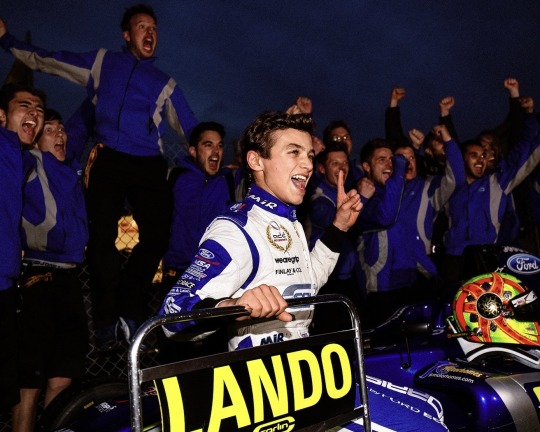

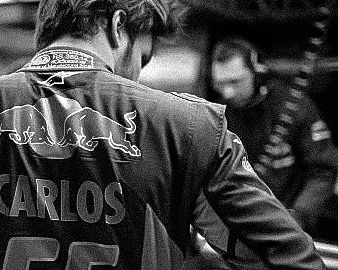


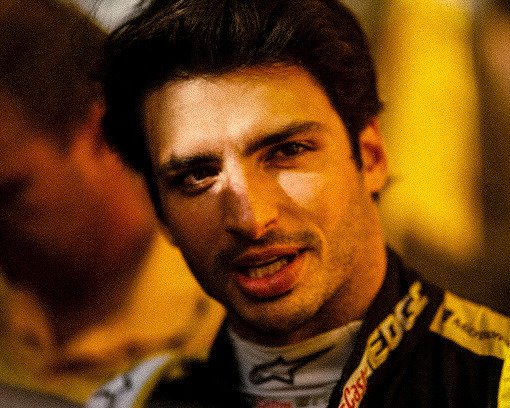


The years pass, I lay in the valley, between the sun and the flowers I used to pick for you. Wounded. Maybe I should’ve picked glory. (Dude, you ditched me in fucking Surrey!)
All prose is by myself, photos are sourced from Getty Images and the photography taken by Europa Press, Rogan Thomson, Mark Thompson, and Xavier Bonilla.
124 notes
·
View notes
Text
The Victims of the overturning of Roe v. Wade.

Original photo taken by: Mario Tama/Getty Images. Image source.
The Dobb's decision is still impacting Americans even after 2 and a half years. What the media is failing to publicize is the victims it's left in its wake.
At least 4 women have died as a direct result of the overturning of Roe v. Wade.
Josseli Barnica, Amber Thurman, Candi Miller, and Nevaeh Crain.
Say Their Names.
In the 26 months since Roe v. Wade was overturned, women in states that have the most restrictive abortion laws have suffered and faced the emotional turmoil caused by the decision. The Supreme Court ruling was directly caused by Donald Trump’s choice to elect a judge who would “automatically” overturn the ruling and would do exactly what he wanted to do: control the bodies of women.
In September of 2021, a woman who was 17 weeks and 4 days pregnant by the name of Josseli Barnica went to the hospital for cramps and then returned the next day bleeding and miscarrying. Her doctors had told her that it would be a crime to perform an abortion she needed. She later died of sepsis caused by an infection that could’ve been prevented via a medically necessary abortion.
In the summer of 2022, a 28-year-old medical assistant by the name of Amber Thurman hoped to receive an at-home abortion in Georgia but was denied because of a 2019 ban going into effect that July. Amber then traveled to North Carolina to obtain a legal, in-office abortion and was sent home with pills instead due to the influx of out-of-state patients. 5 days later she arrived at the hospital in an ambulance after vomiting blood and passing out. Even after doctors had determined there was no fetal heartbeat and there were no legal obligations not to perform a life-saving abortion. She was instead allowed to deteriorate for 17 more hours. When Amber was finally granted the surgery she needed to save her life, it had been too late and her heart had stopped. Her last words were to her mother, those being: “Promise me you’ll take care of my son.”
In the fall of 2022, a woman from Georgia by the name of Candi Miller chose to have an abortion because of her lupus, diabetes, and hypertension diagnoses which meant another pregnancy would kill her. She had ordered and taken abortion pills that had failed to properly expel all pregnancy tissue. A few days later Candi was found unresponsive in her bed with her 3-year-old daughter by her side. Her son later said she was too scared to seek medical care out of fear of prosecution.
In October of 2023, an 18-year-old girl named Nevaeh Crain, who was 6 months pregnant, visited the hospital seeking care a total of 3 times. Nevaeh was denied medical care till her third visit when she arrived at the hospital critically ill. doctors delayed action and demanded a second ultrasound. Nevaeh was dead within hours. It was later determined she miscarried and was suffering from sepsis, and the inaction of hospital staff between her three visits and the delay of treatment after ordering a second ultrasound resulted in her death after only living to be 18 years old.
Say Their Names.
Josseli Barnica, Amber Thurman, Candi Miller, and Nevaeh Crain.
May they all rest in peace, and their memory be a blessing.
source.
#feminism#abortion#abortion rights#bodily autonomy#abortion is healthcare#pro choice#election 2024#us politics#kamala harris#queer#transgender#lgbtqia#lgbtq#queer rights#trans rights#roe v wade#post roe society
21 notes
·
View notes
Text

BAFTA Scot Awards 2019, with Red Carpet Host Sanjeev Kohli
•••
🔝 and all photos are from Getty Images, reposted on: Outlander Online 5 November 2017 and on Outlander Online 3 November 2019
•••
It’s often helpful to have been here, Tumblring, since 2014, Season 1.* You know where the bodies are buried, usually recall who did or said what when, and almost always remember when you’ve seen particular photos before. All the photos on this post were taken, uploaded, and posted on the same days as the events they represent in 2017 and in 2019. (Brian subscribes to the Tumblr Economy Package, and is limited to using only 10 images per post, otherwise he would use more lovely photos from those events.)
But… if you look on the Getty Images website, you’ll see “Upload dates” of the 27th and the 29th of January 2024. 🤯 What the… how could that be, Brian? You just said the photos were uploaded on the same day they were taken.
They were. How else did Outlander Online, and fans on Tumblr, Twitter, Instagram, Facebook, and elsewhere post them earlier than January of this year?
Remember when 🙃 Getty Images changed a server and all photo upload dates were, well, updated? It’s similar to when you might transfer your photos from one hard disk to another. The new disc retains data, such as when the photo was taken and any text included in the EXIF of that photo. However, the upload date changes, from the date of the original or the last upload, to the date you uploaded the photos to the new disk.
So… Getty Images uploaded the 2017 photos to another server on 27 January, and 2019’s on 29 January, 2024. 😃

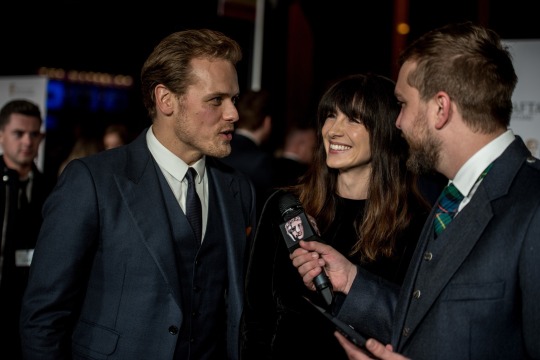
BAFTA Scot Awards 2017, with Red Carpet Host Iain Stirling
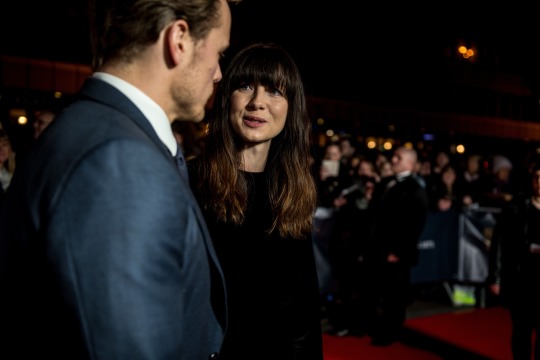
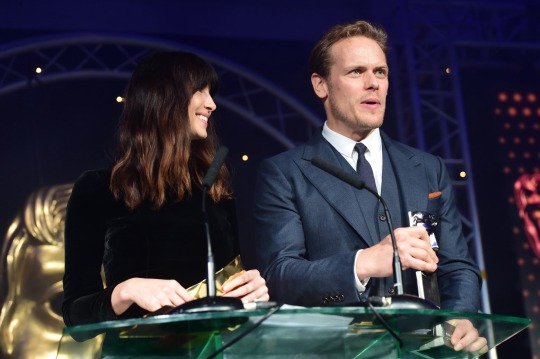

With Wendy Kemp Forbes



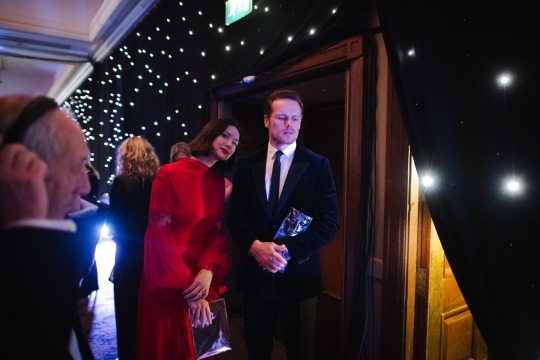
Remember when everything new is old again?
*Brian-in-Finance has been here, Tumblring, since March 2021. I have been here much longer than Brian has.
#Tait rhymes with hat#Good times#Awards#British Academy of Film and Television Arts#BAFTA Scotland Awards#Radisson Blu Hotel#5 November 2017#Double Tree By Hilton#3 November 2019#Glasgow#Campaign To Shorten Awards Season
78 notes
·
View notes
Text
spiderdads actor au!
miguel o'hara is riding the peak of his acting career - he's just starred in the latest installment of a certain superhero franchise, rose to fame for his intense acting style and deep commitment to his craft
very off-the-grid. he hates going on social media because any post related to him will be scattered with comments about his daughter who passed away years ago and god don't people have other things to talk about?
on a lighter note, since he has no social media presence, fans of his have to scrape by on google search getty images of him and screenshots of story posts from other actors where he's in the background
peter b parker is a slightly older well-established actor who used to do more serious roles, but has settled comfortably into playing smaller pseudo-father-figure roles in quirky indie coming-of-age movies and leading men in buddy cop movies and similar shows/movies
he's got quite the fanbase - he gets along with all his co-stars, he's got loads of those stan account compilations like "peter being a himbo for 12 minutes," and he has a tiktok account he absolutely should NOT be self-managing
he doesn't get taken seriously by the press and honestly he's okay with that!
they get cast opposite one another in one of those obvious cash-grab all-star-cast romcoms together and their personalities immediately clash
"yeah, of course he's hot. but god, what an asshole!" -peter
"i'm going to strangle him if he continues to refuse to take this seriously." -miguel (it's literally a romcom)
but pr forces them to be in proximity, since it's bad press if the two co-stars hate each other. they get asked to "play up the chemistry a little bit" to promote the movie
and of course, they each eventually find out the other isn't so bad. peter falls first, miguel falls harder, and soon tabloids are obsessed with figuring out if all the paparazzi photos of them (fighting? flirting?) are just a pr stunt or if they're genuine
and honestly, both peter and miguel are asking themselves the same thing.
BONUS: lyla is miguel's personal assistant (she becomes bffs with peter which miguel HATES), jess and miguel co-starred in a bridgerton-esque romance/drama a few years back and became good friends, and miles played peter's found family son a la the last of us
#spiderdads#miguel o'hara#peter b parker#atsv#miguel x peter#petermiguel#fake relationship? actor au? i'll give it all to you#spiderdads actor au#just might write this... stay tuned
205 notes
·
View notes
Note
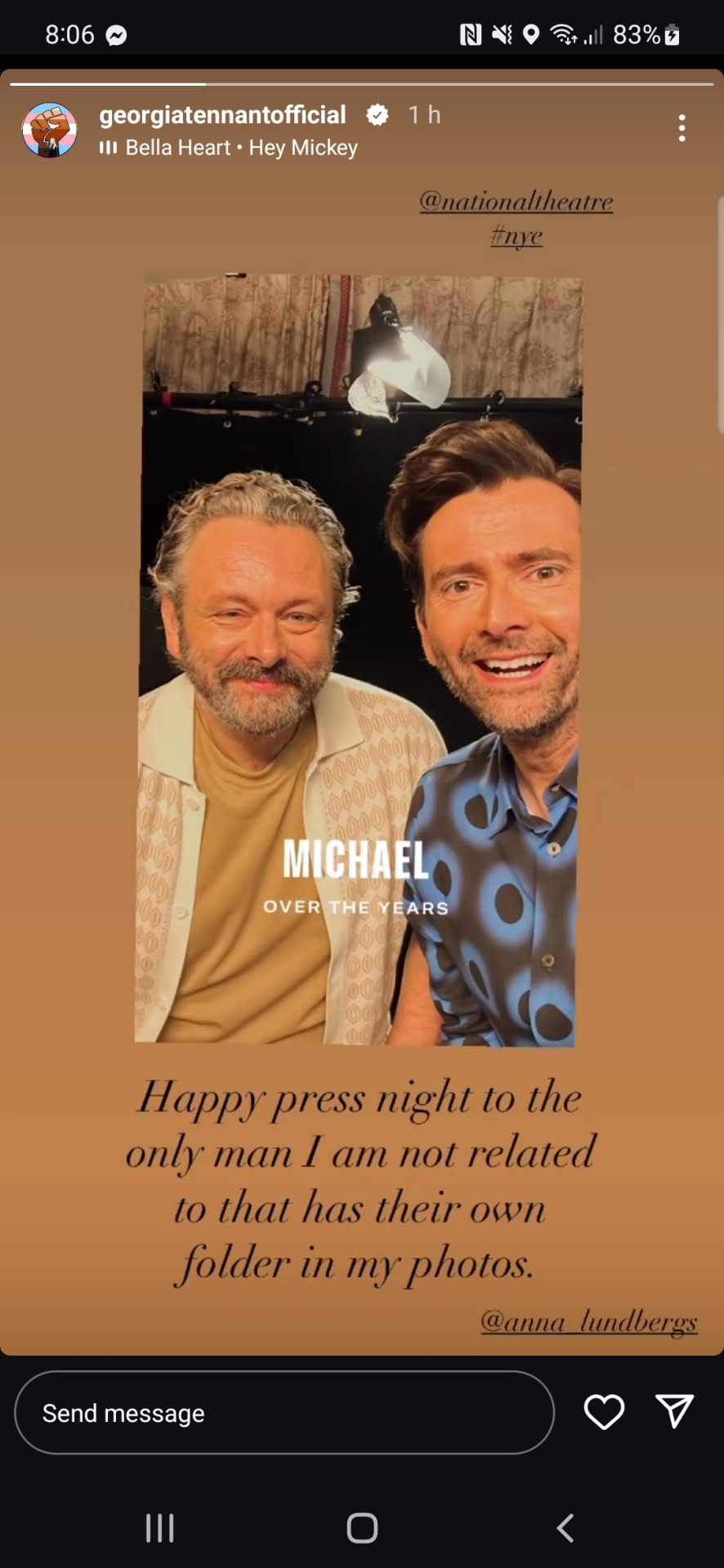
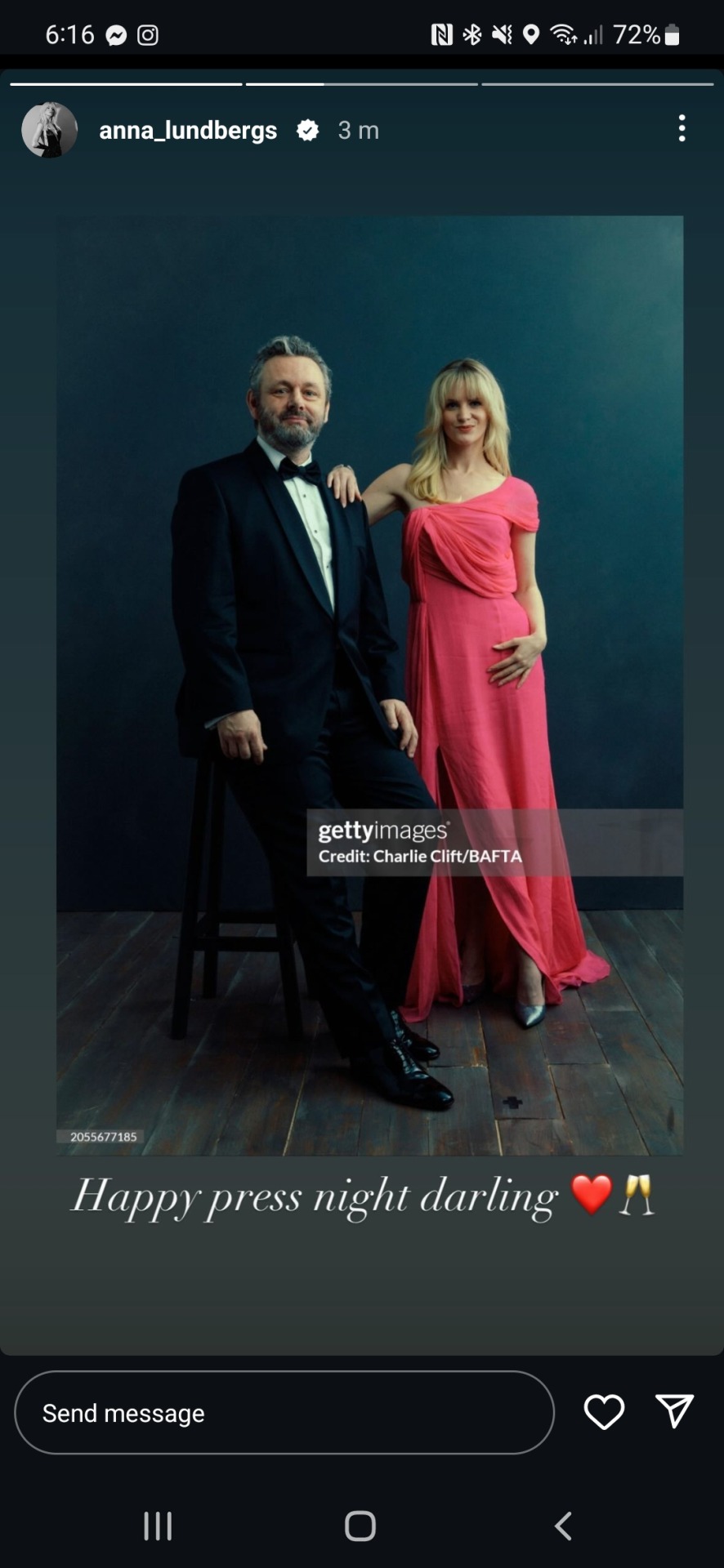
So Al post always have to make sure she the centre of attention on Ms big night which doesn't come as a shock in that photo michael look tense and stiff and where the smile it exactly same as the other he pulls when he with her georgia one on seems more general and supportive of her friend and husband best friend then his actual parter
Would love to hear ur thoughts on this one
Hi there! Well, my DMs have been blowing up all afternoon about these various posts, and...yeah. A lot to unpack here, for sure.
It's interesting to see the use of two very different pictures here--one posed, one a candid pic/selfie--and how that frames everything else that is going on, and highlights several contrasts that are much too great to ignore. Perhaps the most significant contrast is that in the posed photo, Michael and AL are barely touching, and the photographer seems to have made the choice not to pose them like a couple. There is also no apparent "pull" that is unconsciously bringing them together, in spite of whatever direction they might've been given. In the picture of Michael and David, however, not only are they sitting very close together, but that "pull" is readily visible, and you can see them leaning/melting into each other without any effort. So that by itself on a foundational, fundamental level puts these pictures into two very different places.
The second aspect of the contrast--again, in my opinion--is the impersonal nature of Anna's post vs. Georgia's. Anna is posting a Getty Images picture with a watermark with another generic "Darling" caption (the same as she did in another post when the first episode of The Way aired a few weeks ago). At this point it feels, as @invisibleicewands previously described, akin to a "Best regards" at the end of an e-mail. And again, it's not only a photo shoot pic instead of a personal one--an especially strange choice given that Michael has repeatedly talked about how much he hates photo shoots--but a shot where Michael looks stiff and so uncharacteristically subdued.
In the picture Georgia posted, we see that twinkle in his eye, how relaxed he looks, full of that life and joy that we've come to so strongly associate with Michael, and it makes it even more stark how absent that is from the second picture. And further adding to all of this is what you mentioned, about AL centering herself/how she and Michael look in this post, as opposed to the opening of the play.
If we had any doubts about this, Anna seems to have taken the point home this with the story she posted immediately following this one:

For those who may not know, this is a photo from the show Schitt's Creek, of the actors who play the main family (special shout-out to Catherine O'Hara and Eugene Levy, my loves). I have not actually seen the show, so I can't attest to anything specific about the characters' personalities, but it appears this is who AL thinks she and Michael look like. I would say, though, that what is apparent to me is that Anna's priority in posting that first Insta story was the aesthetic/the picture, rather than celebrating Michael or the opening night of the play. Putting these two things together, Michael almost seems like the smallest part of the post, which is an odd thing to do when tonight is the opening night of his play.
And this again wildly contrasts with Georgia's post, where the picture is merely a vehicle for something much deeper, and much more meaningful. Just the positioning of the word "Michael" at the center of the picture is a visual cue that lets us know what this post is about, and this is further augmented by the caption for all of the reasons I enumerated here. I also can't help thinking that there was a reason that a picture of Michael and David was used--not a picture of Michael by himself, and not a picture of Michael and Georgia--and given that this Insta story was posted after AL's, it makes me wonder if that was a deliberate choice, for multiple reasons...
So yes, those are my thoughts on these two Insta stories/pictures from today. I'm definitely interested to see what posts or pictures we might get following tonight's performance/press night (and fingers crossed that David actually made it to the show this time). Also glad as always to hear from my followers about your take on these posts. Thanks for writing in! x
#angel19924#reply post#michael sheen#welsh seduction machine#david tennant#soft scottish hipster gigolo#georgia tennant#nye the play#national theatre#when your boyfriend and his wife hype you up more than your own girlfriend#also every time she posts something now it just seems to get more awful#if you had her post without Georgia's it would look a lot different#but that picture of Michael and David is like night and day to the one with AL#and the more she tries to look like she owns him the more obvious it is she doesn't#choices#not all of them good#but i will leave it to my followers to make up their own minds#anna lundberg#discourse
49 notes
·
View notes
Text

(A Little Life, Part 5, Chapter 2, pg. 602 - Hanya Yanagihara)
Why Schumann?
After some digging on the internet, I have learnt that it is not a coincidence that Hanya chose Schumann's Fantasie in C for this moment, and I believe Jude was playing the first movement in this part. Fantasie in C was composed in 1836 as only a piece called Ruines, expressing his distress at being distant from his beloved Clara, and then it became the first movement of Fantasie. The first movement of the work contains a musical quote from Beethoven's song cycle, An die ferne Geliebte (To the distant beloved) as a secret love message:
Take, then, these songs, beloved, which I have sung for you
However, this musical quotation was not acknowledged by Schumann. The movement also was prefaced with a quote from Friedrich Schlegel:
Durch alle Töne tönet / Im bunten Erdentraum / Ein leiser Ton gezogen / Für den, der heimlich lauschet.
Resounding through all the notes / In the earth's colorful dream / There sounds a faint long-drawn note / For the one who listens in secret
During this period, Robert Schumann and Clara Wieck was in separation because Clara's father disapproved of their relationship. Those quotations truly reflected his yearning to Clara, his passionate love to her, and it is more beautiful to learn that they communicated mostly through music and journals because Clara did not communicate verbally well. In a letter sent to Clara in 1838, he wrote:
The first movement may well be the most passionate I have ever composed - a deep lament for you.
They got married in 1840 but their marriage was not through an easy path because Schumann was not mentally well.
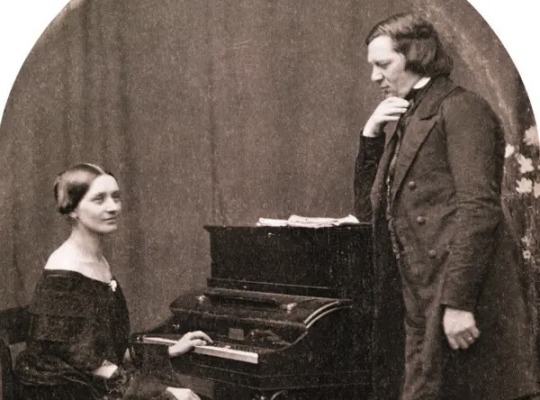
(Clara and Robert Schumann around 1850. Corbis, via Getty Images)
In August of 1844, he suffered a severe mental and physical breakdown. He was in pains, he trembled, wept, could not sleep and even became so sick that he could not walk across the room by himself. By February of 1854, Schumann insisted to be committed, as he felt that he had lost control of his mind. On 27th February, he attempted suicide by throwing himself from a bridge into the Rhine River. He was rescued and taken to the hospital later and remained there until his death on 29th July, 1856. During his confinement, Clara was not allowed to visit him (they communicated thanks to Johannes Brahms, a very good friend of the family, especially Clara) and only able to meet him 2 days before his death.
In Clara's journal on 26th February, 1854 (1 days before his attempt suicide), she wrote:
He was so melancholy that I cannot possibly describe it. When I merely touched him, he said, "Ah Clara, I am not worthy of your love." He said that, he to whom I had always looked up with the greatest, deepest reverence.
The resemblance of Jude and Schumann's mental illness may be one of the reason that Hanya chose this piece for Jude to play after he and Willem got home after their big fight. Jude plays the song with the intention to ease his sadness and fear. In this moment, he feels that this might be the end of their relationship, he is afraid that Willem would leave him because now he finally sees how sick he is. The piece Fantasie symbolizes a yearning for love but in this moment, it is a calling for Willem to stay, to understand, to forgive his action, his sickness.
Sources:
Acreman, Thomas. (2017). The Love Story of Clara Schumann. Retrieved from http://www.classichistory.net/archives/clara-schumann
Wilson, Frances. (2019). A Love Letter in Music Schumann's Fantasie in C, Op. 17. Retrieved from https://interlude.hk/love-letter-music-schumanns-fantasie-c-op-17/
#a little life#hanya yanagihara#jude st. francis#willem ragnarsson#robert schumann#clara schumann#literature#classical music#schumann#thank you to people who reblogged this post i don't know how to comment on your reblog post#my a little life revisit diary
91 notes
·
View notes